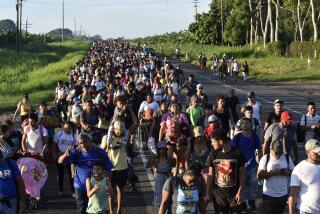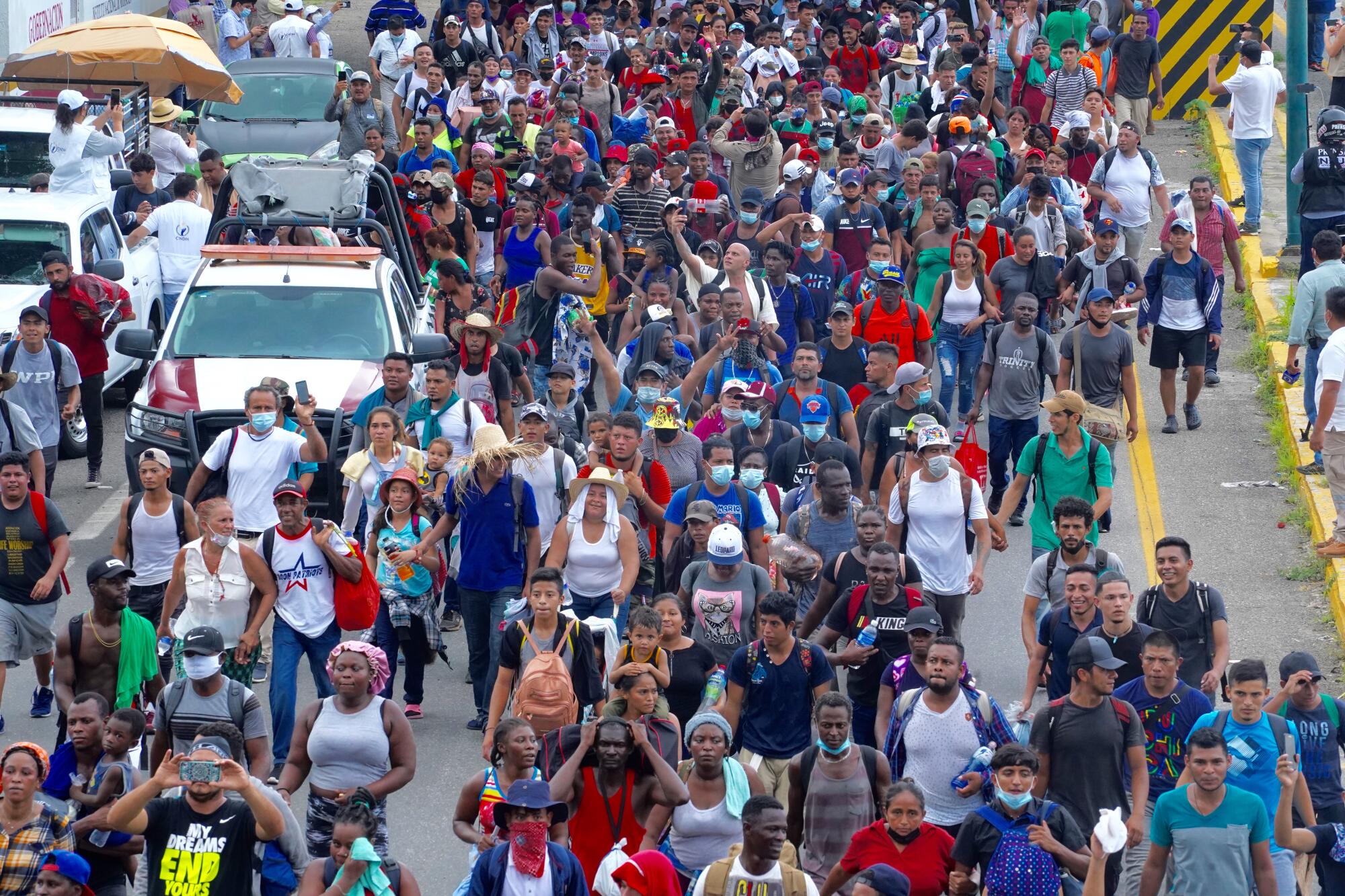
TAPACHULA, Mexico — Psyching themselves up for a 1,000-mile journey, hundreds of migrants gathered near the central plaza of this southern Mexican city and broke into a chant: “U.S.A.! U.S.A.!”
Then they started walking.
Less than 24 hours later, Mexican national guard troops and immigration agents descended on a municipal basketball court where many of the migrants — exhausted and drenched from a tropical storm — had stopped to sleep.
They were loaded onto buses and driven 25 miles back to Tapachula, one of the last places on Earth they wanted to be.
This sweltering city near the Guatemalan border has become a vast open-air detention camp, a dead end for as many as 50,000 migrants who scramble daily to pay for food and shelter as they mull new strategies to break out and get to the United States.
Tapachula has long been a way station for Central Americans traveling north. What’s different now is that large numbers of the migrants stuck here — perhaps as many as half — are from Haiti.
Their presence here is so ubiquitous that the city can seem like a slice of the Caribbean. Haitians line up at banks, aid agencies and cellphone shops. They hang out in the central plaza. Street markets, cafes and hair salons have sprung up to serve them. Haitian music blares from storefronts.
The Haitians here are not fleeing in the aftermath of last month’s earthquake or the July assassination of the country’s president.
Rather they are among the 250,000 Haitians who left their homeland after the devastating 2010 earthquake there and settled in Chile or Brazil. Both those countries have suffered steep economic declines during the pandemic, sparking the current exodus.
The journey to Mexico is epic, but the goal is to reach the United States — where the Biden administration is already trying to figure out what to do about an encampment of thousands of migrants, mostly Haitians, outside of Del Rio, Texas.
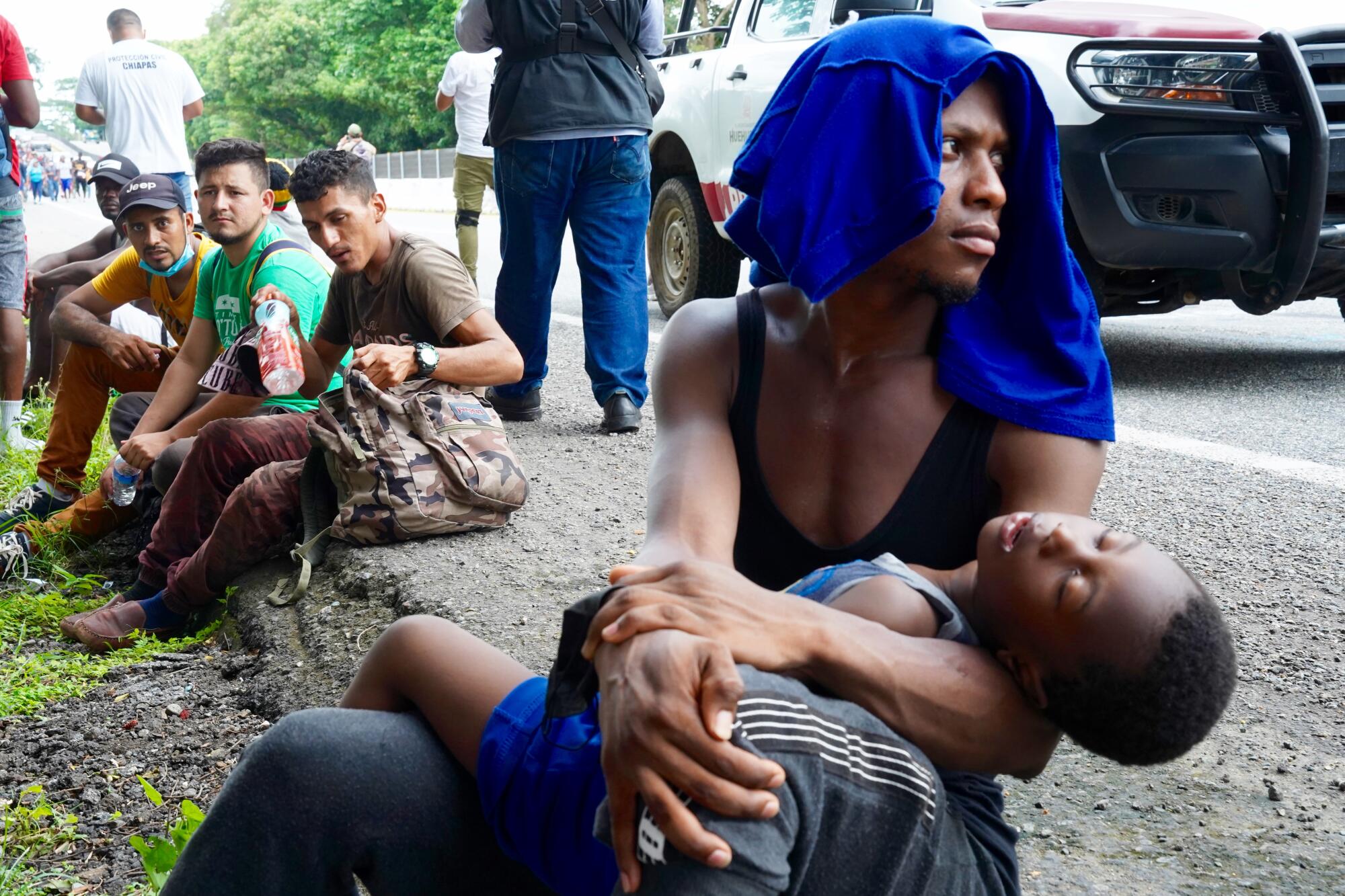
The bottleneck in Tapachula is a result of U.S. pressure on Mexico to keep migrants from reaching the United States.
When Donald Trump was president, he publicly threatened to destroy Mexico’s economy with tariffs if the country did not move to stop the northward flow of migrants. Mexico complied. President Biden has not wielded public threats, but experts said his approach is similar.
“Even though the Biden administration may be doing it more quietly, they are certainly putting as much pressure on Mexico as was put on Mexico in the last administration,” said Jessica Bolter, an analyst at the Migration Policy Institute in Washington. “They are still relying on Mexico to prevent people from getting to the U.S.-Mexico border.”
What Mexico gets in return for its cooperation is not entirely clear. But the arrangement may bolster requests for U.S. assistance on various binational issues, including trade, crime and health, and limit White House criticism of Mexican policies.
“This puts Mexico in a much stronger position to get concessions from the United States,” said Cris Ramón, an immigration consultant in Washington. “To what extent is the United States treating Mexico with kid gloves on issues such as corruption and democratic backsliding, in exchange for Mexico serving as an interdiction state of migrants?”
In halting northbound migrants, Ramón noted, Mexico plays a role akin to what Turkey once performed for the European Union, holding back migrants coming from Syria, Iraq and elsewhere.
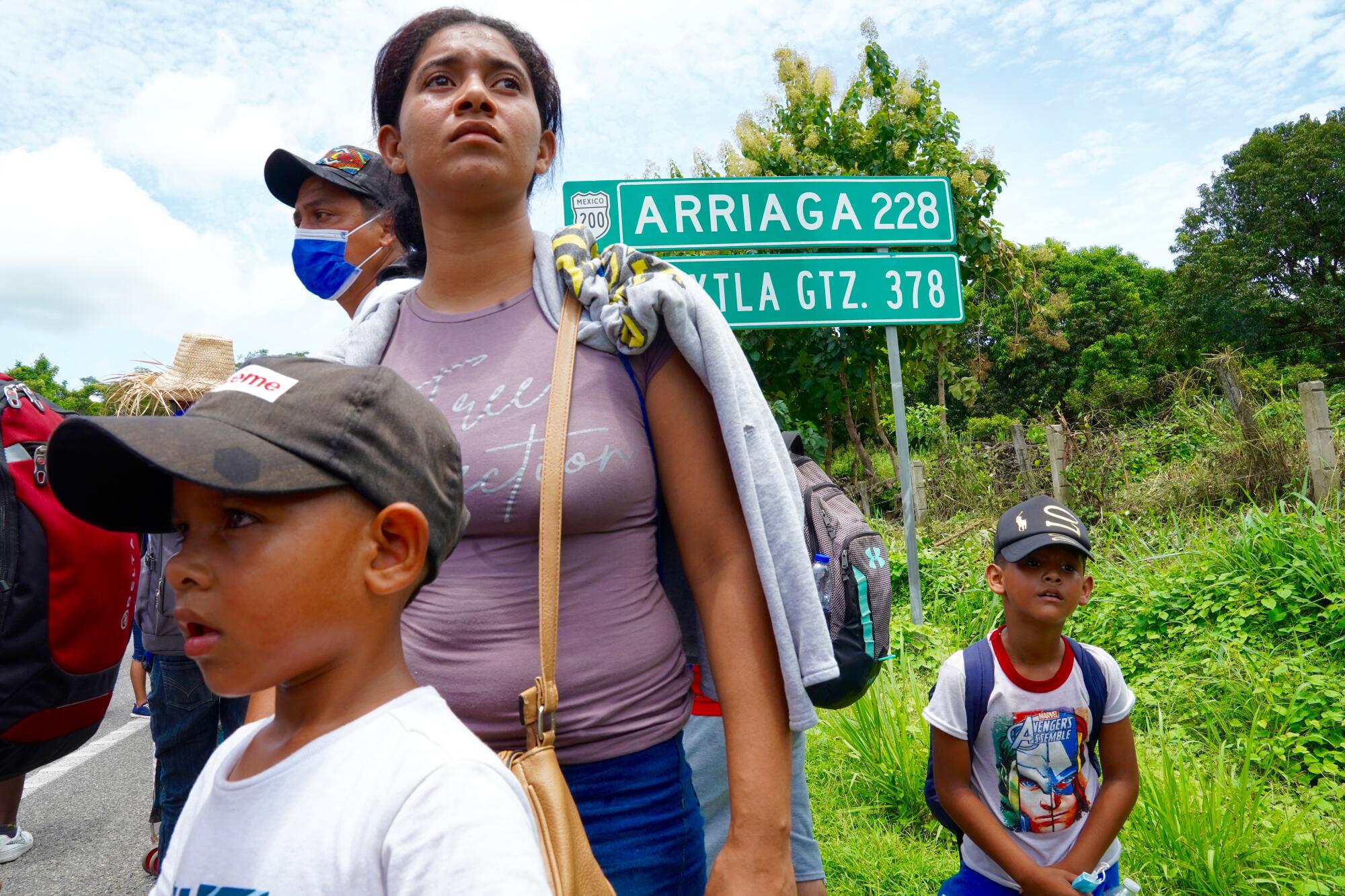
In the last decade or so, Mexico has emerged as a signature transit country for migrants from across the globe, and Tapachula, which usually has a population of about 350,000, has become a polyglot choke point. Passing through are people from the Caribbean, South America, Asia and Africa.
While it was common for migrants to get delayed here while awaiting Mexican transit documents, they typically managed to continue their journeys north.
These days, however, Tapachula has become a trap. Waves of Mexican national guard forces in riot gear, backed by immigration agents, block the roads heading north.
Escape is close to impossible for those who can’t afford coyotes, or smugglers, who charge as much as $10,000 a person to reach the U.S. border.
Migrants stuck here have little chance of finding jobs. Most lack legal authorization to work, and Chiapas state, which includes Tapachula, is one of Mexico’s poorest regions.
“There is no life for us in Tapachula,” said Jean Edelince, 36, a native of Port-au-Prince, Haiti, who has been in Tapachula for four months with his wife and their 2-year-old daughter. “There is no work, no money, no way to survive.”
He spoke inside a rundown house crammed with some 60 Haitians — men, women and children. Most sleep on mats. There is one functioning bathroom, no air conditioning and little running water. Tenants pool the little cash they have to pay rent of about $3,000 a month.
To reach Tapachula, Haitians spend months crossing international borders, navigating jungles, mountains and deserts, while dodging thieves, corrupt cops and bribe-seeking officials.
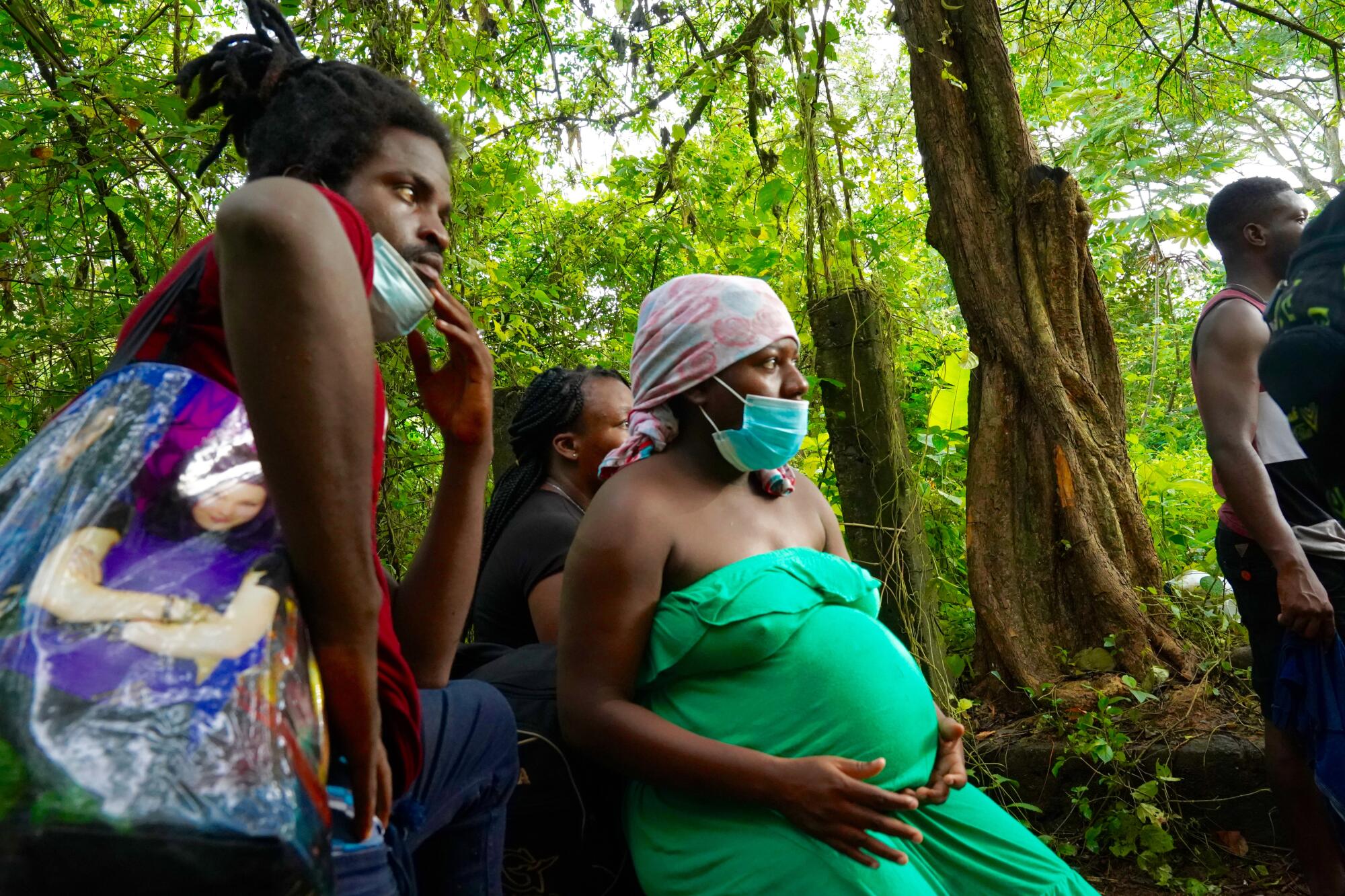
Edelince and his family started in Chile — where he lived for four years and worked at a plastics factory — and made their way north through Bolivia, Peru, Colombia, Panama, Costa Rica, Nicaragua, Honduras and Guatemala, before arriving in Mexico.
During a six-day walk through the notorious Darien Gap — a hazardous stretch of rainforest that connects Colombia and Panama — Edelince said he saw the bodies of more than a dozen migrants who didn’t make it.
Among the Haitians seeking medical assistance on a recent morning at a mobile clinic outside the refugee office in Tapachula was Youseline Toussaint, 25, whose left arm was in a cast.
She said she broke it in a motor vehicle accident weeks earlier while traveling north through Guatemala. Her 7-month-old daughter was killed.
In addition to economic conditions in South America, U.S. immigration policy is also a factor in the exodus. Unlike Central Americans, Haitians apprehended by the U.S. Border Patrol cannot be summarily sent back to Mexico.
If they can slip into the United States and file for asylum — especially if accompanied by young children — they stand a good chance of securing provisional residency as their cases drag on in U.S. immigration court.
Each day, hundreds of Haitians line up daily outside the headquarters of Mexico’s refugee agency to apply for refugee status. Most don’t qualify.
The Haitians “arrive like an avalanche with so many people and are making the situation very complicated,” said Andrés Ramírez Silva, who heads the Mexican Commission for Refugee Assistance, which handles asylum claims. “This situation has put us on the verge of collapse.”
Mexican authorities regularly deport Central Americans back to their homelands, or deposit them at the Guatemalan border, a practice denounced by human rights activists. U.S. authorities, meantime, have been flying Central Americans detained in the United States to Tapachula.
Haitians pose a greater challenge. Mexico does not currently deport Haitians, but it lacks detention space to hold them — a growing crisis because both Colombia and Panama are reporting soaring numbers of Haitians heading north.
“Haitians cannot be sent back to a completely devastated country,” Ramírez Silva, the Mexican refugee chief, said in an interview. “There should be some kind of migratory alternative, but that is not happening.”

In recent weeks, exasperated migrants have revived “caravans,” trekking north together in large groups. Scenes of national guard troops beating migrants intercepted in caravans have generated widespread condemnation.
“A human manhunt,” Tapachula Roman Catholic Bishop Jaime Calderón Calderón labeled the operation in a statement read last week during Mass at local churches.
As people have fled into the jungle to avoid arrest, families have been separated and children lost in the confusion.
“This is a savage, cruel and lamentable operation,” said Father Heyman Vázquez Medina, a Catholic priest in the town of Huixtla, north of Tapachula. “We are all aware that this is the result of pressure from the United States.... Mexico has always done the dirty work of the United States.”
In August, Mexico’s defense minister declared that the “principal objective” of the military at the country’s southern border was to “stop all migration.” But the leftist government of President Andrés Manuel López Obrador has denied systematic abuse.
The president said migrants are being contained in the south not because he is succumbing to U.S. demands, but to spare them exposure to criminal gangs operating on Mexico’s northern border.
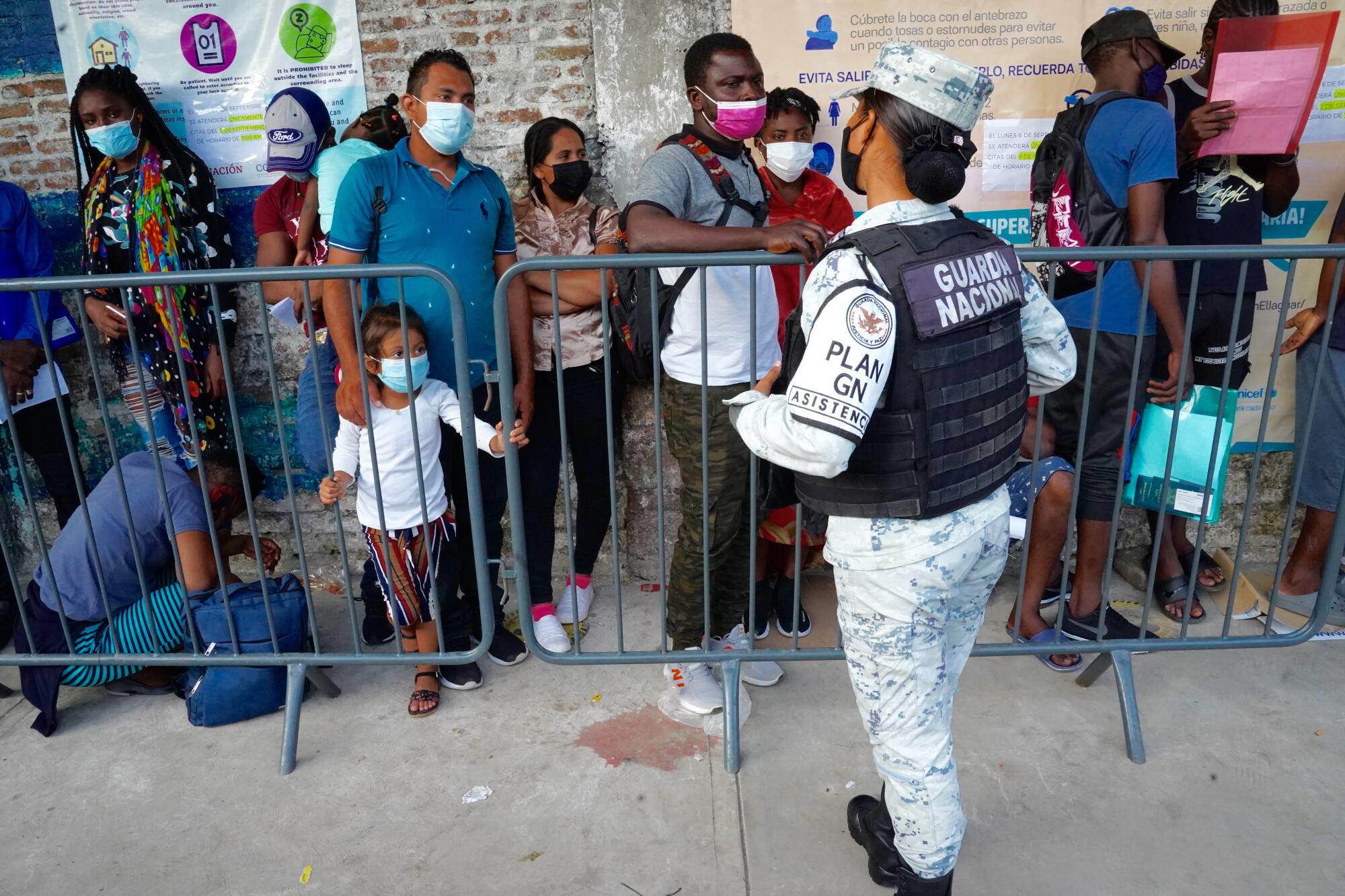
“The human rights of immigrants have not been violated,” López Obrador recently told reporters. “There will be no repression in our government.”
However, many pointed out the incongruity of Mexico touting recent deliveries of aid to Haiti — and receiving plaudits for taking in refugees from Afghanistan — as it was cracking down on migrants in the south.
“Our government sends Navy ships with aid to Haiti but also sends [immigration agents] and the National Guard to impede, sometimes with beatings, Haitians and others from leaving Tapachula en route to the north,” tweeted the Mexican historian Lorenzo Meyer. “The pressure from Washington must be strong to force this contradiction on Mexico.”
Special correspondents María de Jesús Peters and Liliana Nieto del Río in Tapachula and Cecilia Sánchez in Mexico City contributed to this report.
More to Read
Sign up for Essential California
The most important California stories and recommendations in your inbox every morning.
You may occasionally receive promotional content from the Los Angeles Times.


